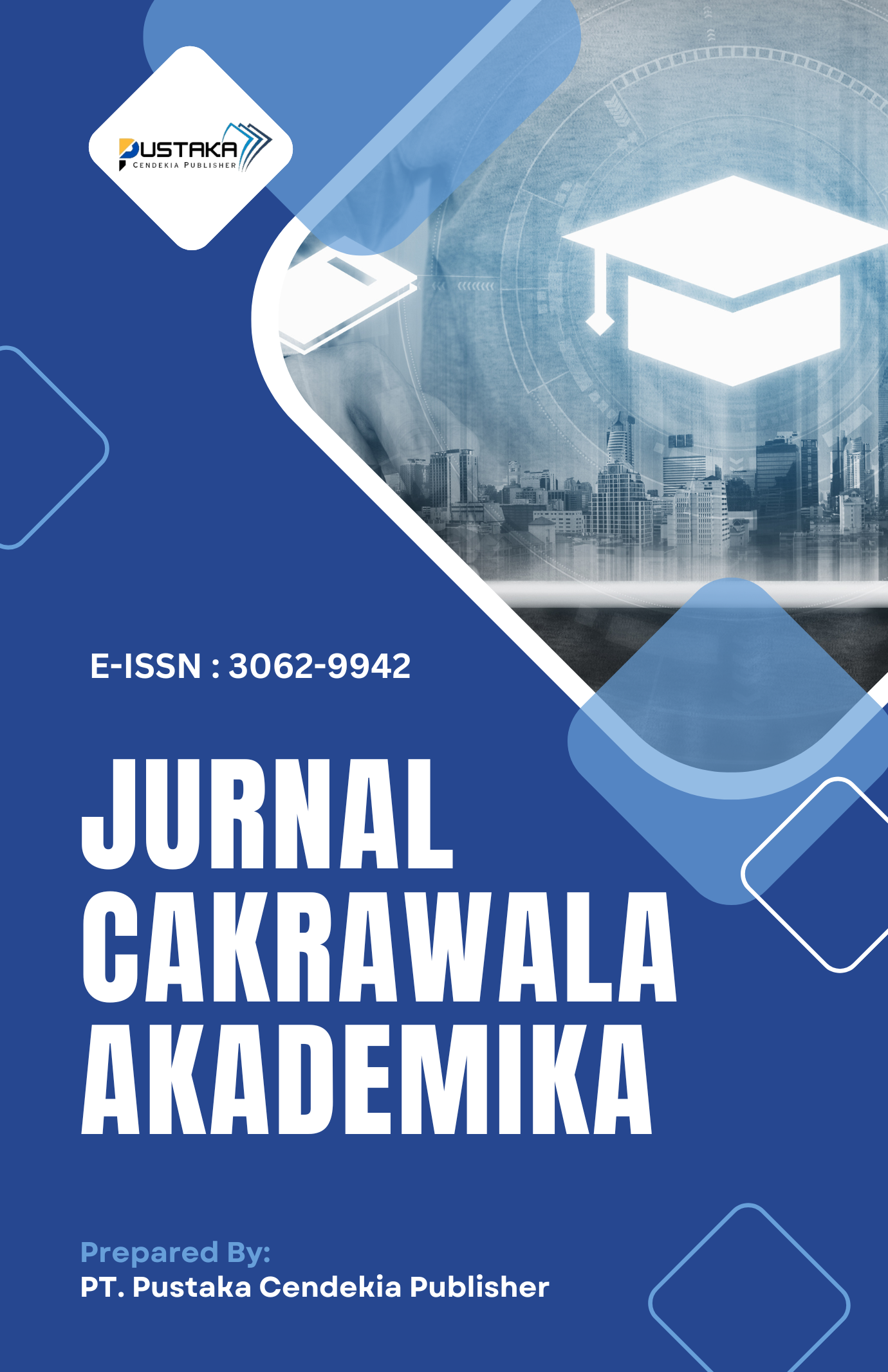Kerja Sama Guru PAI dan Shadow Teacher dalam Meningkatkan Hasil Belajar Siswa Autisme di SMP IT Nurul Ilmi Medan
DOI:
https://doi.org/10.70182/JCA.v1i4.26Keywords:
Kerja Sama Guru PAI, Shadow Teacher, Siswa AutismeAbstract
Abstract. This research is based on one of the schools in Medan which has children with special needs autism who are assisted by Shadow Teachers in the learning process, namely at Nurul Ilmi IT Middle School. The focus of this research is also on PAI teachers who also help in the PAI learning process. So there is a need for cooperation between PAI teacher with Shadow Teacher in helping the learning process of the child with Autism. This research uses a qualitative research method using a case study approach. Data collection techniques using observation, interviews and documentation. Data analysis techniques using data reduction, data presentation, and drawing conclusions The results of the research show that the PAI Teacher collaborates with the Shadow Teacher, namely the PAI Teacher explains the material in front of the class and then the Shadow Teacher delivers the material to students with Special Needs individually using private media selection. The obstacles encountered by both of them were reluctance to communicate with each other due to hesitation, lack of communication and time. The efforts that can be made by both of them are staying focused on their respective tasks, improving communication, aligning views, and taking the time to improve cooperation between the two of them in between times.
Downloads
References
Adolph, R. (2016). komunikasi pendidikan penerapan teori dan konsep komunikasi dalam pembelajaran edisi pertama. 1–23.
Cohen, E. G., & Lotan, R. A. (2014). Designing groupwork: Strategies for the heterogeneous classroom. In Communities (Vol. 2nd).
David, smith j. (2014). Teori dan Implementasi Edisi Revisi. Pemikiran Islam Di Malaysia: Sejarah Dan Aliran, 20(5), 40–43.
Direktorat Pembinaan Sekolah Luar Biasa. (2011). Pedoman umum penyelenggaraan pendidikan insklusif. Departement Pendidikan Nasional, 70, 1–36.
Ellitan. (2009). Permendiknas Nomor 70 Tahun 2009 Tentang Pendidikan Inklusif Bagi Peserta Didik yang Memiliki Kelainan dan Memiliki Potensi Kecerdasan dan/atau Bakat Istimewa. Экономика Региона, 19(19), 19.
Farah, A., Agustiyawati, Rizki, A., Widiyanti, R., Wibowo, S., Tulalessy, C., Herawati, F., & Maryanti, T. (2022). Panduan Pendidikan Inklusif. Kepala Pusat Kurikulum Dan Pembelajaran Badan Standar, Kurikulum, Dan Asesmen Pendidikan Kementerian Pendidikan Kementerian Pendidikan, Kebudayaan, Riset, Dan Teknologi, 3.
Garnida, D. (2015). Pengantar Pendidikan Inklusif. PT.Refika Aditama.
Hajar, A. bin A. bin. (1991). Fathul Baari. Pustaka Azzam, 3–5.
Indonesia, P. R. (2015). PP No 13 tahun 2015 Tentang Standar Nasional Pendidikan. Lembaran Negara RI, 1, 1–5.
Rosdianti, Y., Ayunda, Z. M., & Novitasari, M. I. (2021). Pelindungan dan Pemenuhan Hak Atas Pendidikan Bagi Peserta Didik Penyandang Disabilitas di Masa Pandemi Covid-19 KOMISI NASIONAL HAK ASASI MANUSIA REPUBLIK INDONESIA 2021.
Setianingrum, Y. (2019). Shadow Teacher.
W, J. (20 C.E.). Penelitian Kualitatif. Andrew’s Disease of the Skin Clinical Dermatology.
Downloads
Published
Issue
Section
License
Copyright (c) 2024 Reni Pratiwi, Afrahul Fadhila Daulai, Enny Nazrah Pulungan (Author)

This work is licensed under a Creative Commons Attribution-ShareAlike 4.0 International License.














